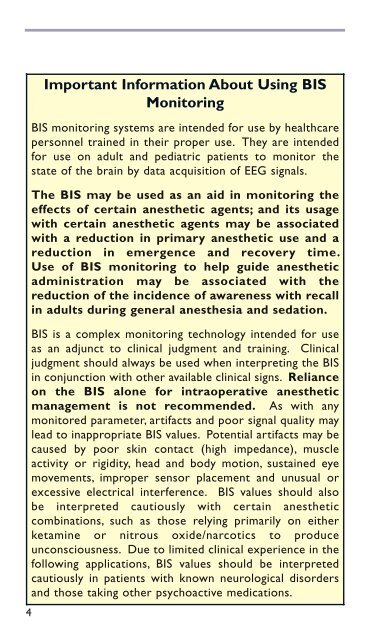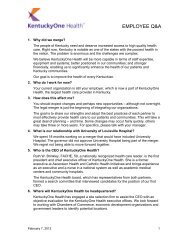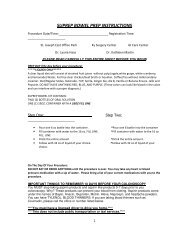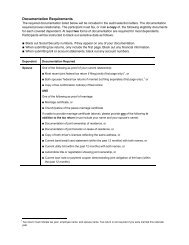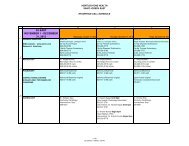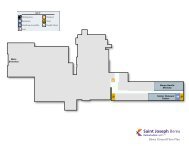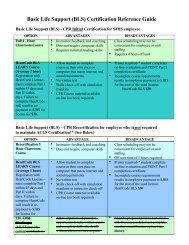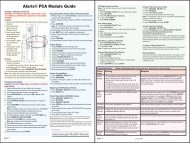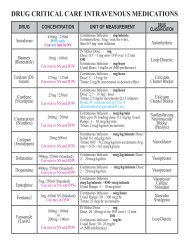BIS guide for clinicians
BIS guide for clinicians
BIS guide for clinicians
Create successful ePaper yourself
Turn your PDF publications into a flip-book with our unique Google optimized e-Paper software.
4<br />
Important In<strong>for</strong>mation About Using <strong>BIS</strong><br />
Monitoring<br />
<strong>BIS</strong> monitoring systems are intended <strong>for</strong> use by healthcare<br />
personnel trained in their proper use. They are intended<br />
<strong>for</strong> use on adult and pediatric patients to monitor the<br />
state of the brain by data acquisition of EEG signals.<br />
The <strong>BIS</strong> may be used as an aid in monitoring the<br />
effects of certain anesthetic agents; and its usage<br />
with certain anesthetic agents may be associated<br />
with a reduction in primary anesthetic use and a<br />
reduction in emergence and recovery time.<br />
Use of <strong>BIS</strong> monitoring to help <strong>guide</strong> anesthetic<br />
administration may be associated with the<br />
reduction of the incidence of awareness with recall<br />
in adults during general anesthesia and sedation.<br />
<strong>BIS</strong> is a complex monitoring technology intended <strong>for</strong> use<br />
as an adjunct to clinical judgment and training. Clinical<br />
judgment should always be used when interpreting the <strong>BIS</strong><br />
in conjunction with other available clinical signs. Reliance<br />
on the <strong>BIS</strong> alone <strong>for</strong> intraoperative anesthetic<br />
management is not recommended. As with any<br />
monitored parameter, artifacts and poor signal quality may<br />
lead to inappropriate <strong>BIS</strong> values. Potential artifacts may be<br />
caused by poor skin contact (high impedance), muscle<br />
activity or rigidity, head and body motion, sustained eye<br />
movements, improper sensor placement and unusual or<br />
excessive electrical interference. <strong>BIS</strong> values should also<br />
be interpreted cautiously with certain anesthetic<br />
combinations, such as those relying primarily on either<br />
ketamine or nitrous oxide/narcotics to produce<br />
unconsciousness. Due to limited clinical experience in the<br />
following applications, <strong>BIS</strong> values should be interpreted<br />
cautiously in patients with known neurological disorders<br />
and those taking other psychoactive medications.


